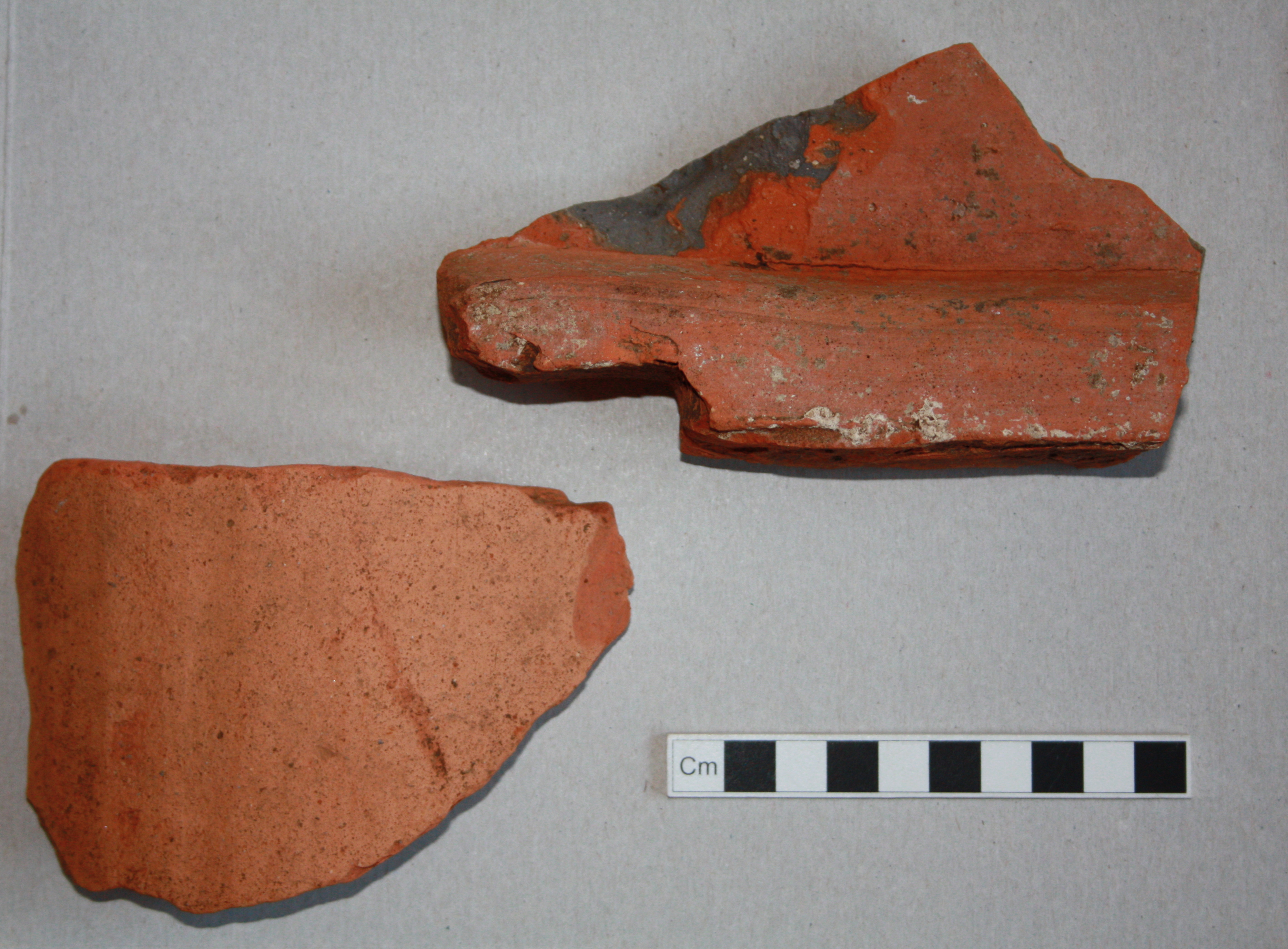Two fragments from Roman roof tiles. The fragment on the right comes from the broad flat type (known as tegulae) which would have covered most of the roof area. This example shows traces of mortar for attachment of the arched tile type (known as imbrices) which sealed the joins between tegulae. Presumably our mortared example here had been been used for roofing at our site.
Two fragments from Roman roof tiles. The fragment on the right comes from the broad flat type (known as tegulae) which would have covered most of the roof area. This example shows traces of mortar for attachment of the arched tile type (known as imbrices) which sealed the joins between tegulae. Presumably our mortared example here had been been used for roofing at our site.

